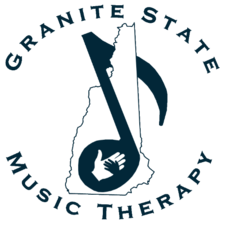Behind the Scenes of Music Therapy
It may be challenging sometimes to tell the difference between a music therapist and a musician giving a performance. The music that is chosen for the performance may be therapeutic in nature, but it is different from a music therapy session. Some musicians go to nursing homes and perform for the residents there. It provides a wonderful service for the facility, and the residents enjoy the music. They are able to be transported to another time through music of their youth.
Preparing for Performance Versus Therapy
However, this musician is not trained in how music can be a tool to work on different goals with the client. They do not look at medical charts and they typically don’t have any knowledge about the residents’ diagnoses or why they are there. It is strictly a performance; they do not change what they are doing to adapt to the needs of the client moment to moment. It is a typical performance like any other, the musician masters their craft and practices the songs on their set list, and then when they are done playing what they rehearsed, they pack up and leave. A music therapist on the other hand has various songs prepared and will plan a session outline before they walk in, but it isn’t necessarily what they will stick to in the moment. Unlike in a musical performance, music therapists are assessing the response from the clients and changing and adapting what they are doing to reach certain goals. They also often implement improvisation, making music on the spot within a certain genre or using different familiar chord progressions.
“Sun-Downing”
For example, say a music therapist is playing music at a nursing home and it is in the evening. Some of the residents there may be experiencing what is known as “sun-downing” during the music session. This is when an older person with dementia or Alzheimer’s becomes agitated in the evening. It was most likely a time of day for them that brought transition when they were younger; husbands were getting home from work and dinners were being made. The children came home from school and needed to do their homework before dinner and then parents scurried around to get their bedroom routines done before bed. These individuals sense there is a change, but they don’t know what it is and being in a different environment is very disorienting. They are not in their initial homes and don’t need to make dinner, so this often leaves them feeling restless, but they may not necessarily know why.
Clinical Judgment
A music therapist is trained in how to handle this, so they would possibly use soothing music to help bring down the levels of arousal. Or, they may decide to do something very active and upbeat with many instruments playing to distract them from their anxiety or channel that energy into something productive. It would depend on the group and what the music therapist decides to do in the moment using their clinical judgment. A music therapy group at a nursing home in the evening would be structured much differently than a group in the morning when the residents are first getting up for the day. A recreational performance done by a musician where it is strictly for entertainment and enjoyment would likely be very similar no matter the time of day and feeling of the residents.
Goal Writing
Goal writing is at the core of what a music therapist does, what drives them moment to moment during the session, and also how a therapist prepares for the next one with reflection afterwards. Goals for a music therapy session are going to look very different depending on the situation and population. A music therapy group typically has broader goals due to meeting the needs of many different individuals, whereas goals written for an individual session can get quite specific and change and evolve more quickly.
Inside the Mind of a Music Therapist
Music therapy sessions revolve around the client. A musician may keep their audience in mind, for example they would have a different set list for an open mic night and a very different one for an afternoon show at a senior center. However, the music that is performed is ultimately chosen to make the performer perform at their best. They pick songs that fit in their range and keys that they are comfortable with. The music is something that first spoke to them, so then they are sharing it with others. It is a beautiful thing, to find music that meanders into your heart and speaks to your soul. To be able to share the same music with the passion that it makes you feel inside is truly a gift. But music therapy is more about providing a vessel for the client, using it to form a bridge and build a relationship. It is centered around the client, it is more about what they see in the client and reflecting it back to them, and then in turn assessing the response it provokes. Music therapists are proficient on their instruments and have extensive backgrounds in music theory, however it is not a polished performance that they present. It is more of a work in process, a spontaneous meeting of musical minds in a moment.
A Takeaway
Music therapy is an evidence-based practice where a board certified therapist creates a relationship with the client, and then works towards goals using music as the primary tool. Sometimes you might end up with a final product, but most of the experience is about the process and the growth that occurs within the musical space created.
Author: Jenni Chute, MA, MT-BC
Editor: Sonya Imperio, MT-BC
Stay up-to-date with our latest resources!
Sign up for our newsletter!
We value your privacy.






